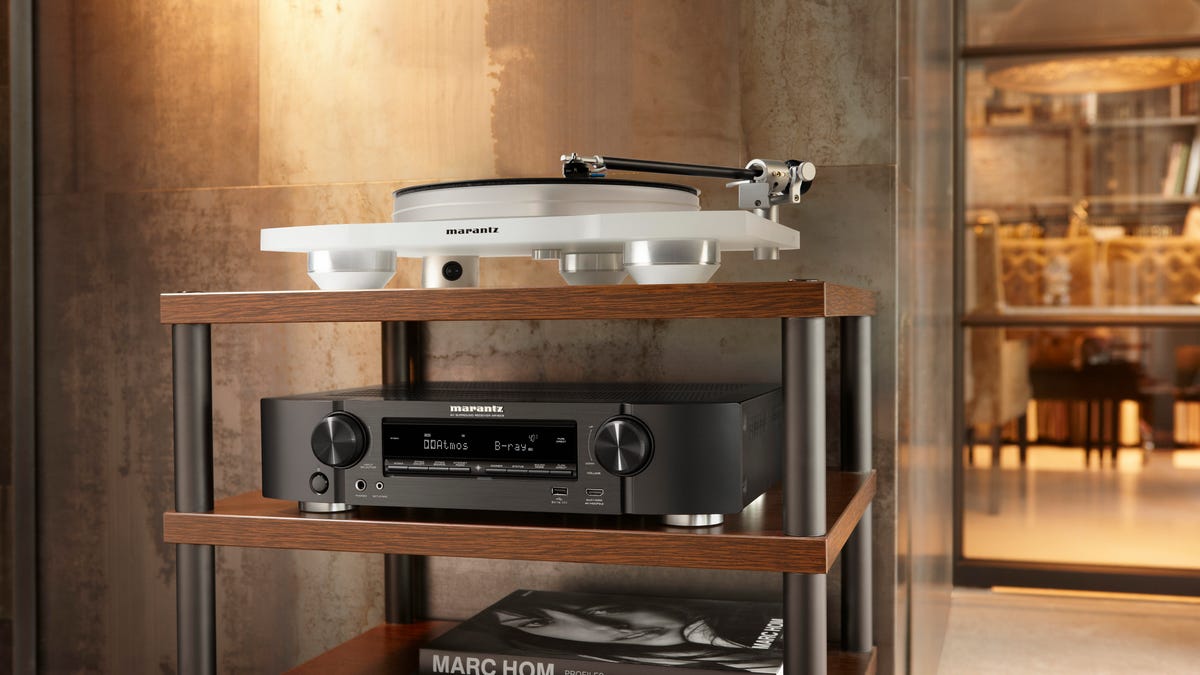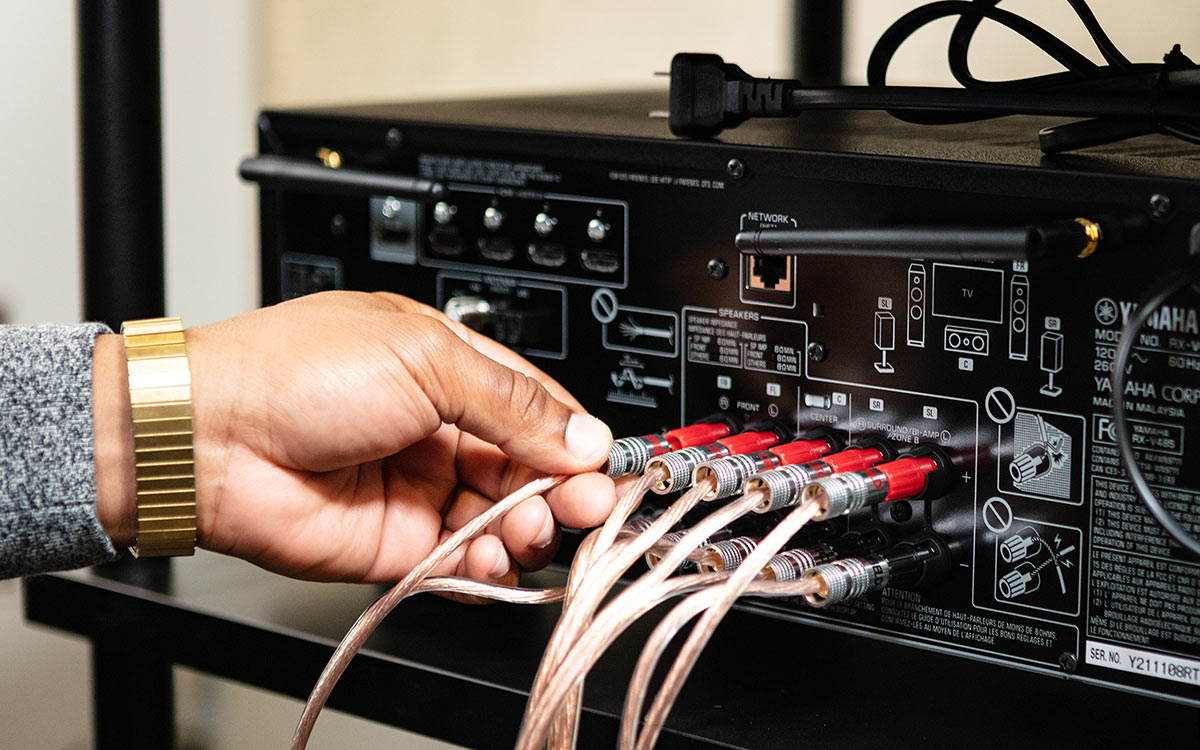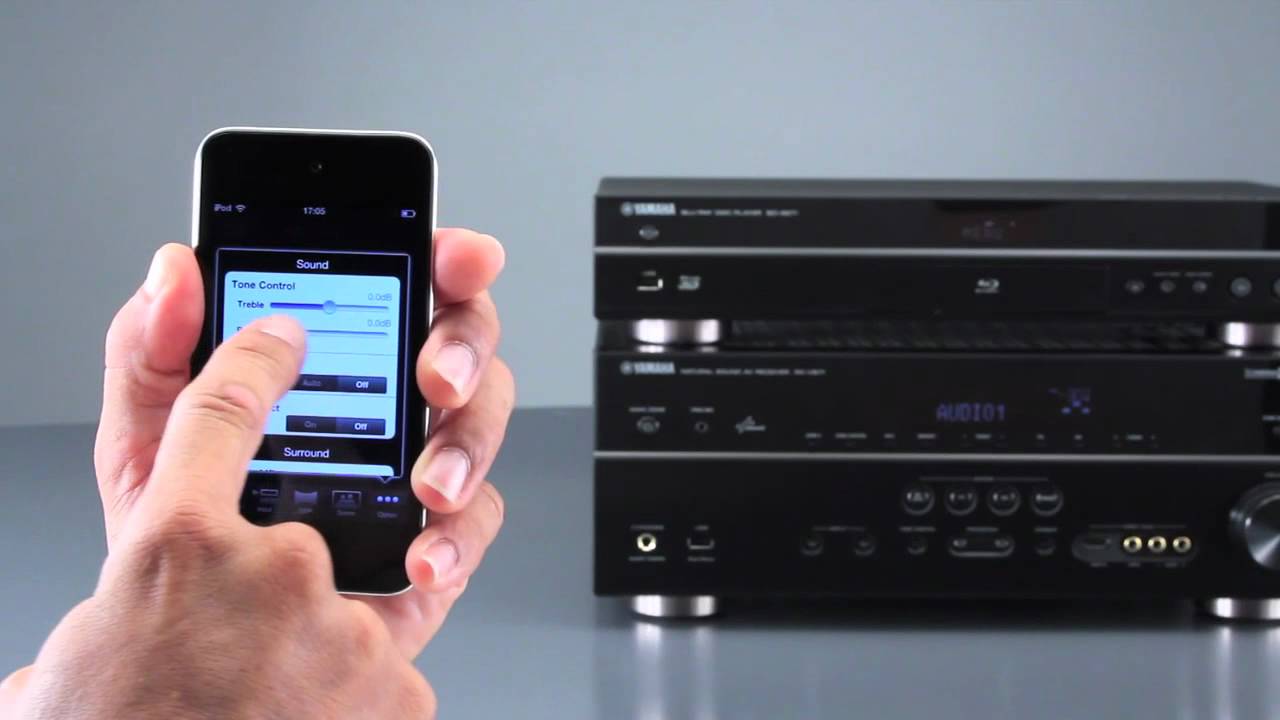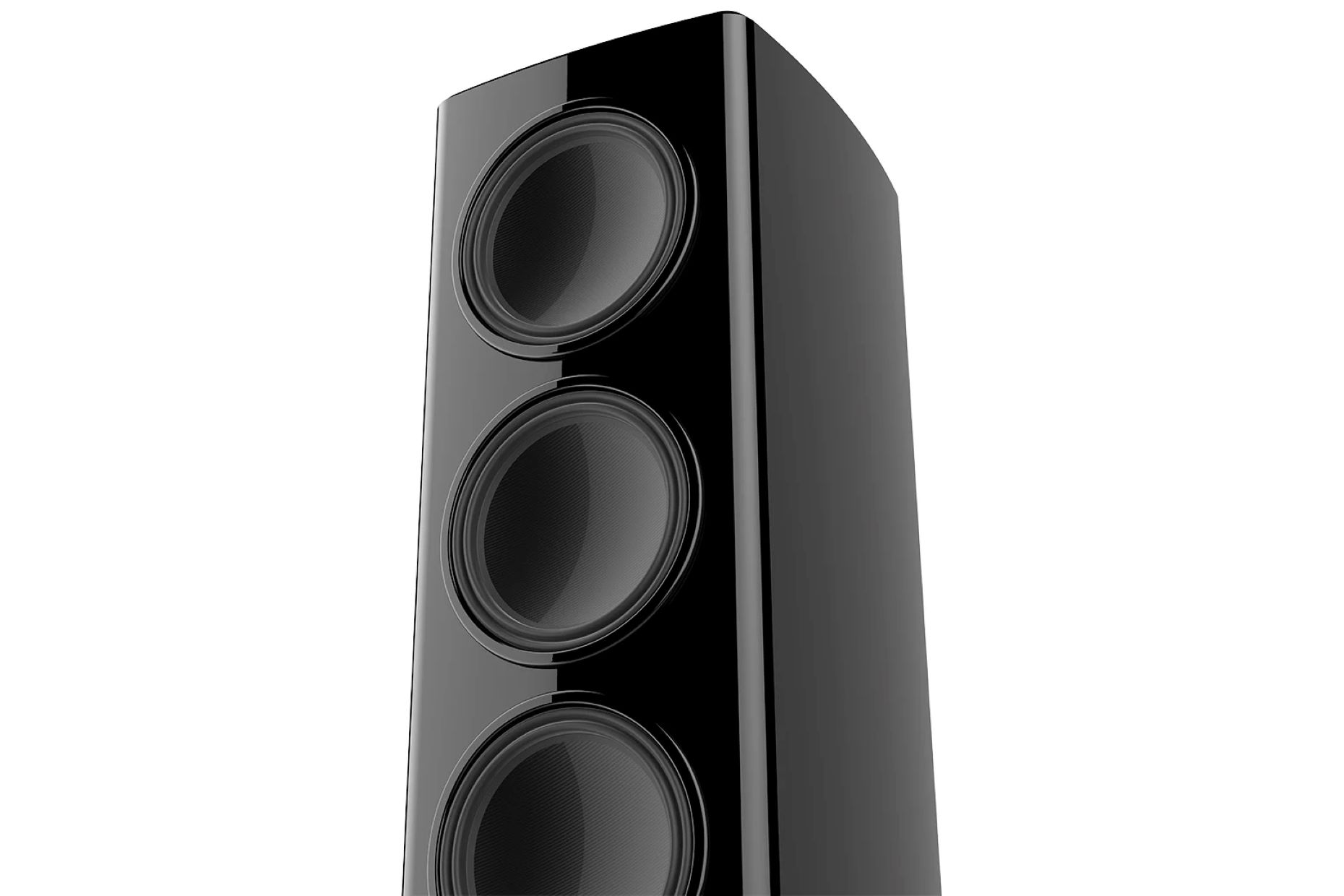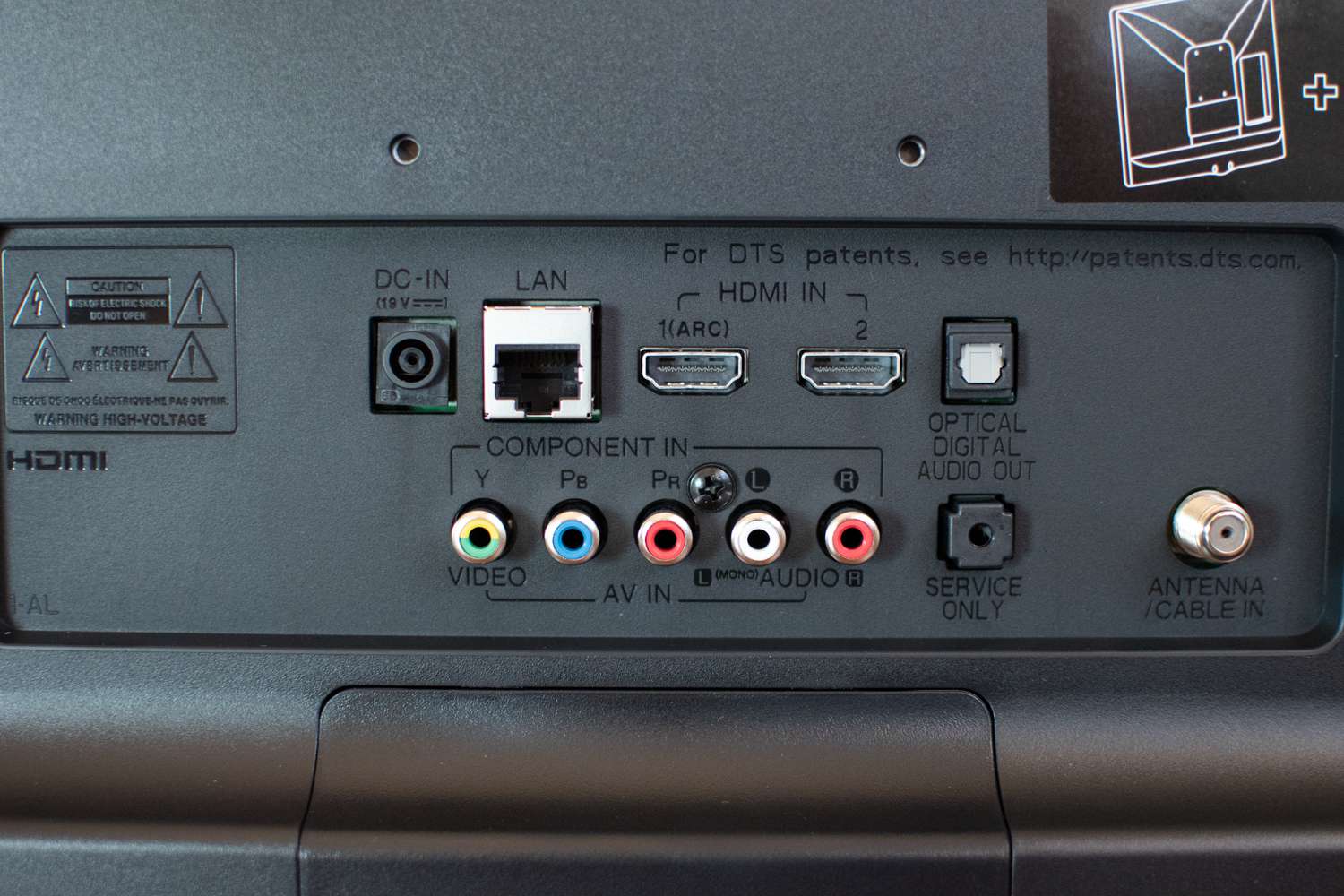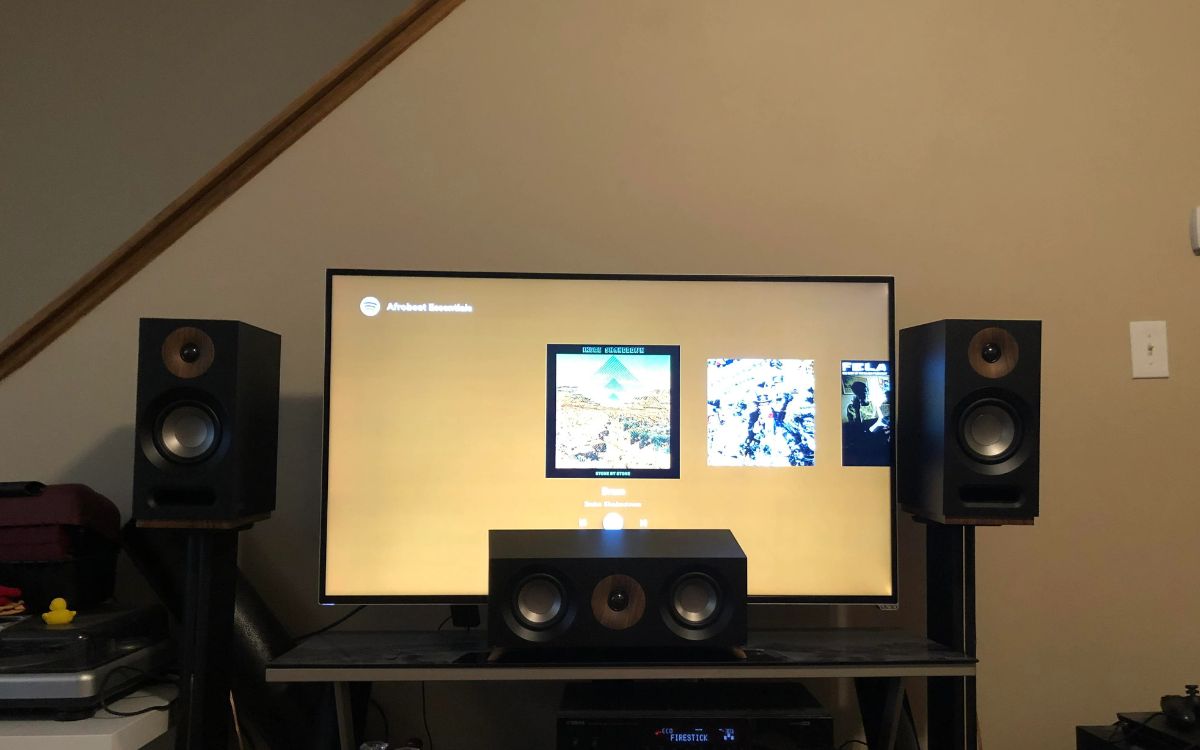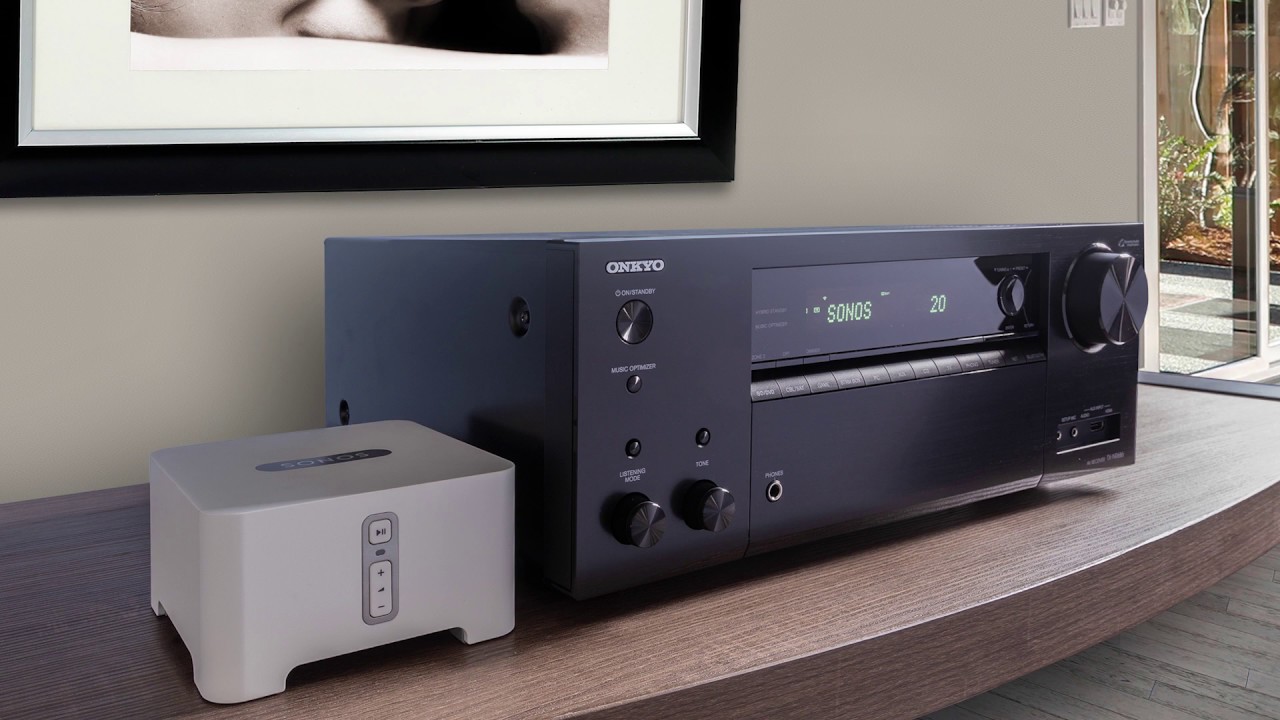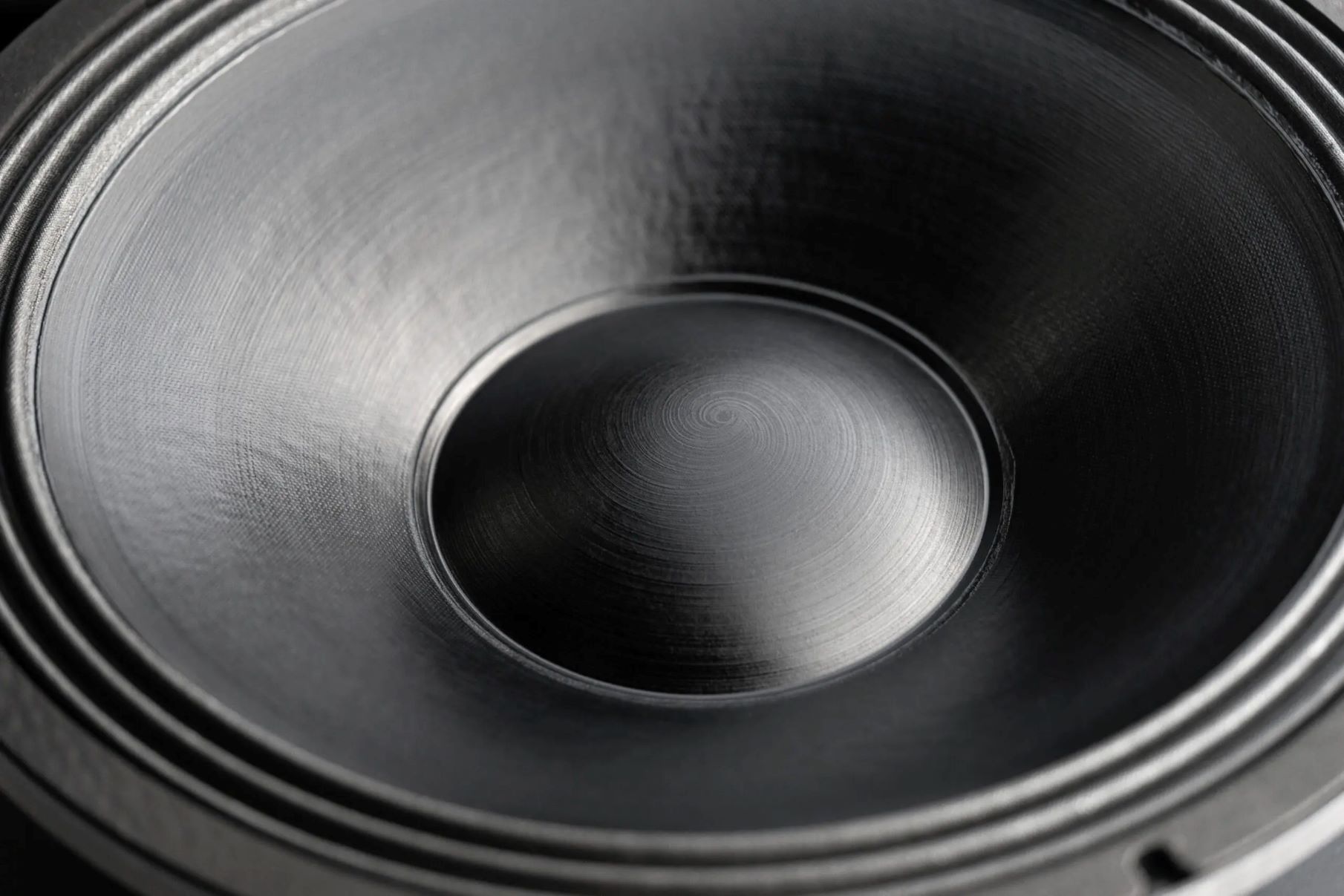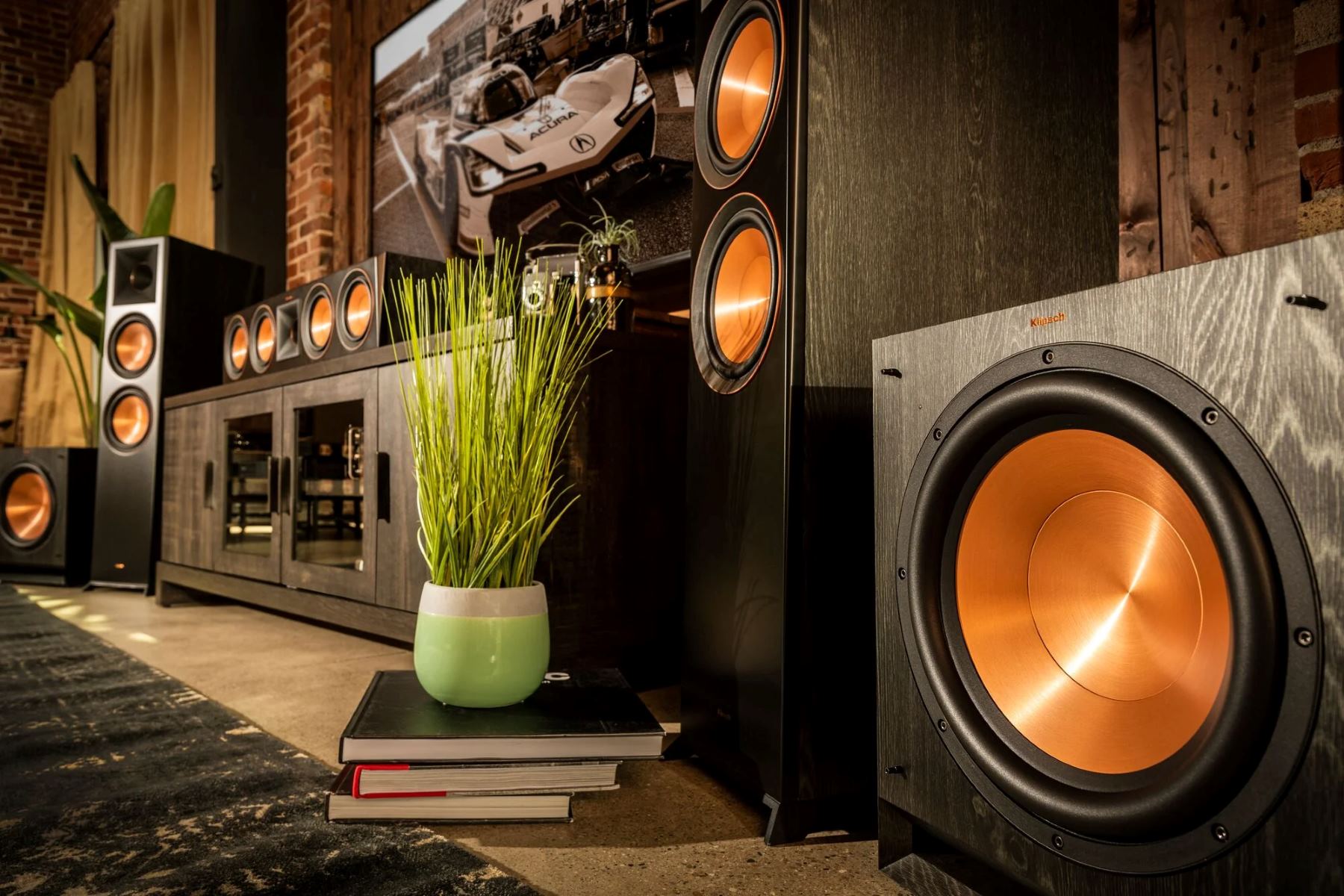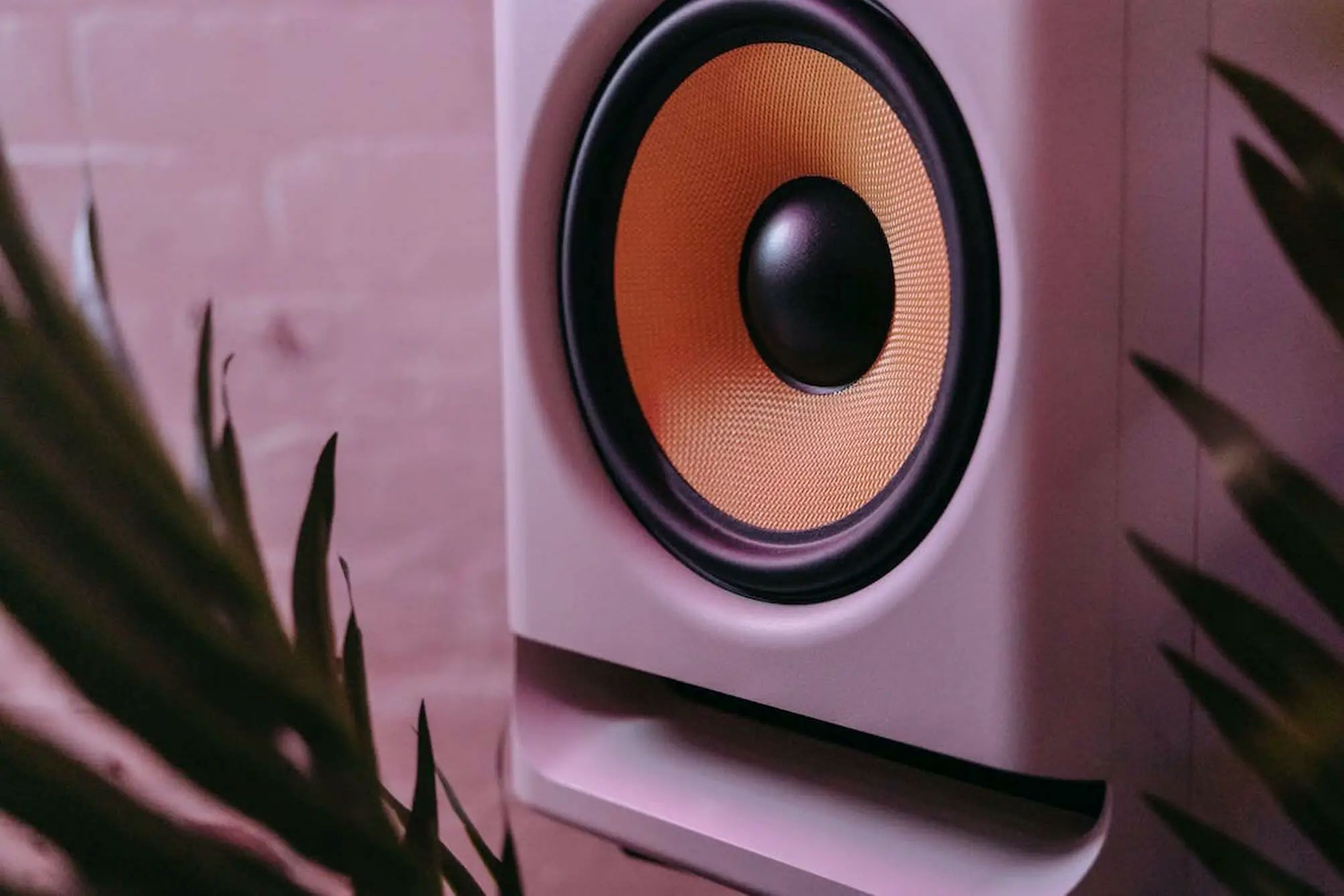Home>Devices & Equipment>Subwoofer>Where To Connect Subwoofer On Denon Receiver
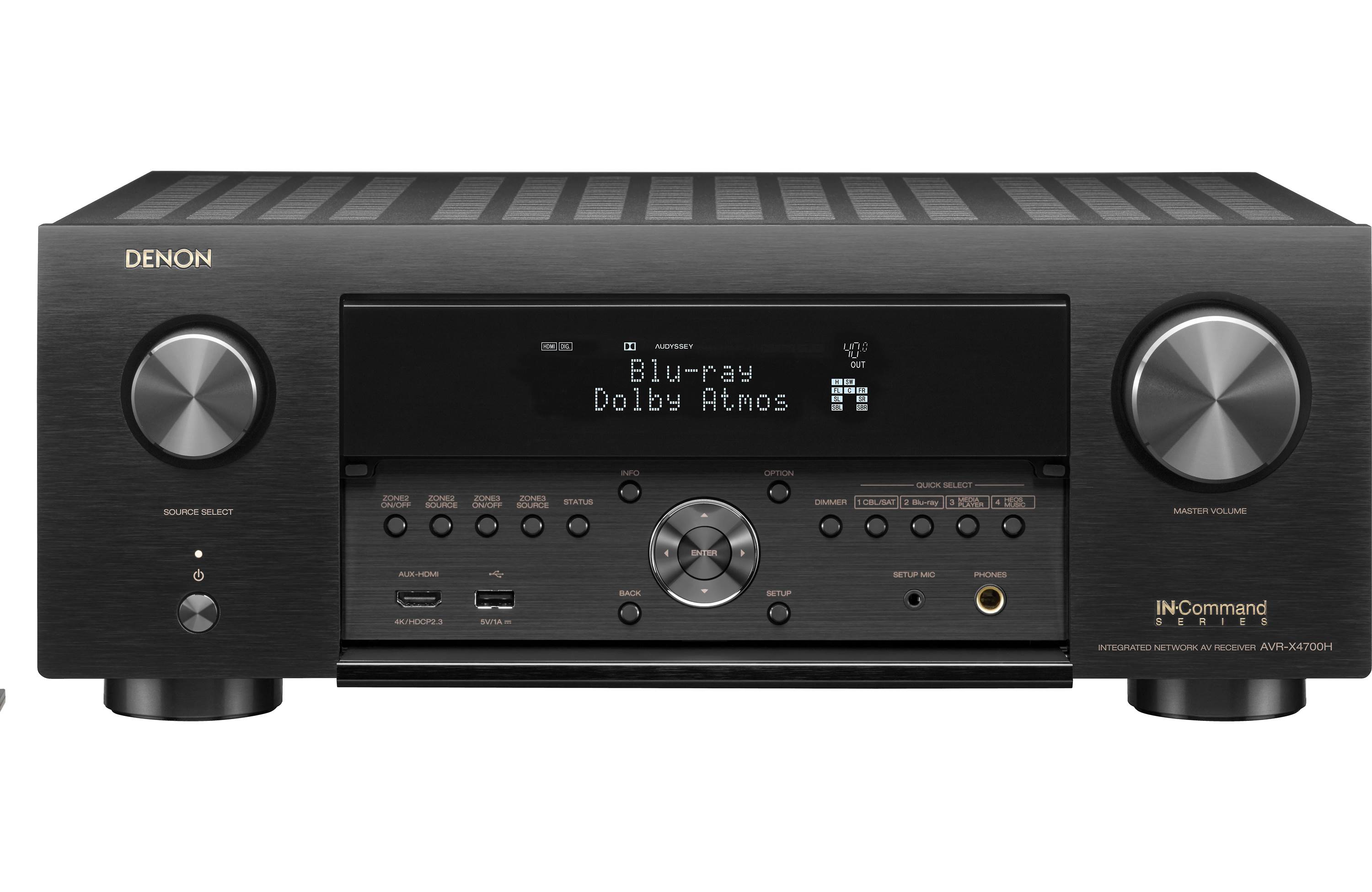

Subwoofer
Where To Connect Subwoofer On Denon Receiver
Modified: January 22, 2024
Looking for the perfect spot to connect your subwoofer on your Denon receiver? Find out where to connect your subwoofer for optimal bass performance.
(Many of the links in this article redirect to a specific reviewed product. Your purchase of these products through affiliate links helps to generate commission for AudioLover.com, at no extra cost. Learn more)
Table of Contents
- Introduction
- Understanding the Denon Receiver
- Importance of Connecting a Subwoofer
- Available Subwoofer Connection Options
- Connecting the Subwoofer Using the LFE Input
- Connecting the Subwoofer Using the RCA Line-Level Inputs
- Connecting the Subwoofer Using the Speaker Level Inputs
- Choosing the Ideal Connection Method
- Troubleshooting Subwoofer Connection Issues
- Conclusion
Introduction
Welcome to the world of immersive audio! If you’re a true audiophile or just someone who appreciates deep, powerful bass in your music or movies, then you understand the importance of having a quality subwoofer. Subwoofers are specialized speakers designed to reproduce low-frequency sounds, adding depth and richness to your audio experience.
However, connecting a subwoofer to your audio system can sometimes be a bit confusing, especially when dealing with complex receivers like those from Denon. Denon is a well-renowned brand in the audio industry, known for its high-quality receivers that offer impressive sound and versatility.
In this article, we will explore the different options for connecting a subwoofer to a Denon receiver. Understanding these connection methods will allow you to make the most of your subwoofer and fully enjoy the powerful bass it provides.
Before we delve into the various connection options, it’s important to note the significance of having a subwoofer in your audio setup. The subwoofer is responsible for reproducing the lowest frequencies in the audio spectrum, typically ranging from 20Hz to 120Hz. These low frequencies provide the impact, rumble, and depth that can make a significant difference in your music and movie-watching experiences. Without a subwoofer, the sound can feel flat and lacking in that heart-pounding bass.
Now that we understand the importance of a subwoofer, let’s explore the different ways you can connect it to your Denon receiver. Whether you have a dedicated LFE (Low-Frequency Effects) output, RCA line-level inputs, or even speaker level inputs, we’ll guide you through each method, ensuring you can make the best choice for your specific setup.
So, if you’re ready to take your audio experience to the next level and unleash the power of a subwoofer in your Denon receiver, let’s dive into the world of subwoofer connections!
Understanding the Denon Receiver
Before we begin discussing the various subwoofer connection options, it’s essential to have a basic understanding of the Denon receiver and its features. Denon receivers are renowned for their robust performance and advanced audio capabilities. These receivers come with a range of inputs, outputs, and settings to optimize your audio experience.
Denon receivers typically feature multiple channels and are capable of decoding various audio formats like Dolby Atmos, DTS:X, and more. This allows for an immersive surround sound experience with precise placement of sound effects. Whether you’re watching a movie, playing video games, or listening to music, a Denon receiver can deliver exceptional audio quality.
One of the key factors to consider when connecting a subwoofer to a Denon receiver is determining the available output options. Most Denon receivers provide a dedicated output specifically designed for connecting a subwoofer – the LFE (Low-Frequency Effects) output. This output is specifically tailored to send low-frequency signals to your subwoofer, ensuring optimal bass reproduction.
In addition to the LFE output, Denon receivers often come with RCA line-level inputs. These inputs allow you to connect your subwoofer using an RCA cable, which is a common method for connecting audio devices.
Furthermore, some Denon receivers offer speaker level inputs. This option enables you to connect your subwoofer directly to the receiver’s speaker terminals, utilizing the speaker-level audio signal. This method can be useful if you have a passive subwoofer that requires an external amplifier.
Understanding the different inputs and outputs available on your Denon receiver is crucial for selecting the appropriate connection method for your subwoofer. It ensures that you make the right connections and maximize the performance of your audio setup.
Now that we have a better understanding of the Denon receiver and its capabilities, it’s time to explore the various connection options available to connect your subwoofer. Each method has its own advantages and considerations, so let’s dive in and find the best solution for your setup.
Importance of Connecting a Subwoofer
When it comes to audio systems, a subwoofer plays a crucial role in delivering a truly immersive listening experience. The importance of connecting a subwoofer to your audio setup cannot be overstated. Here are some key reasons why a subwoofer is essential:
1. Enhanced Low-End Frequencies: Subwoofers are designed to reproduce low-frequency sounds, typically ranging from 20Hz to 120Hz. These frequencies are responsible for the deep, rumbling bass that brings music, movies, and games to life. Connecting a subwoofer allows you to experience the full range of low-end frequencies, adding depth, impact, and realism to your audio.
2. Improved Sound Balance: A properly integrated subwoofer can help achieve a balanced audio output. By handing off the demanding low frequencies to the subwoofer, the main speakers can focus on reproducing the mid and high frequencies with greater clarity and precision. This results in a well-balanced soundstage, where each component plays its part without straining or distorting.
3. Immersive Home Theater Experience: If you have a home theater system, a subwoofer is a must-have component. Explosions, thunderstorms, and other low-frequency effects are critical to creating a realistic cinematic experience. A subwoofer adds visceral impact and intensity to action-packed movies, making you feel like you’re right in the middle of the action.
4. Defined Music Listening: Whether you enjoy classical music, rock, or hip-hop, a subwoofer can greatly enhance your music listening experience. Low-frequency instruments, such as the kick drum, bass guitar, or pipe organ, have significant presence in the low-end spectrum. Connecting a subwoofer allows you to accurately reproduce these instruments and appreciate the full depth and richness of the music.
5. Room Acoustics Correction: A well-placed subwoofer can address room acoustic challenges. Due to the long wavelengths of low frequencies, they tend to interact with the physical dimensions of your listening space, causing uneven bass response or areas of excessive bass buildup. By carefully positioning and calibrating your subwoofer, you can mitigate these issues and achieve a more balanced and accurate bass reproduction.
These reasons demonstrate why connecting a subwoofer is crucial in achieving an immersive and well-rounded audio experience. Whether you’re watching movies, playing games, or listening to music, a subwoofer adds a new dimension to your audio, allowing you to hear and feel every detail, vibration, and impact.
Now that we understand the importance of a subwoofer, let’s explore the different ways you can connect it to your Denon receiver. Understanding these connection methods will enable you to fully utilize the capabilities of your subwoofer and enjoy the full potential of your audio setup.
Available Subwoofer Connection Options
When connecting a subwoofer to your Denon receiver, you have several options available, depending on the specific features and connections of your receiver. Let’s explore the three primary connection methods:
- LFE (Low-Frequency Effects) Input: Many Denon receivers come equipped with a dedicated LFE output specifically designed for subwoofer connection. The LFE input allows you to send a dedicated low-frequency signal to your subwoofer, ensuring accurate and impactful bass reproduction. This method is ideal if your subwoofer has an LFE input and you want to take full advantage of the subwoofer’s capabilities.
- RCA Line-Level Inputs: Another common connection option is using the RCA line-level inputs on both the receiver and the subwoofer. The RCA inputs are usually color-coded, with the red plug representing the right channel and the white or black plug representing the left channel. This method is suitable for subwoofers without dedicated LFE inputs, as it allows you to connect the subwoofer using a standard RCA audio cable.
- Speaker Level Inputs: If your subwoofer lacks LFE or RCA inputs, you can still connect it to your Denon receiver using the speaker level inputs. This method involves connecting the subwoofer to the receiver’s speaker terminals using speaker wire. By connecting the subwoofer in parallel with your main speakers, it receives the full audio signal and extracts the low frequencies. This option is ideal for passive subwoofers or subwoofers that require an external amplifier to operate.
Each connection option has its own advantages and considerations. It’s important to assess your specific equipment and requirements to determine the most suitable connection method for your setup. Consider factors such as the available connections on your Denon receiver, the type of subwoofer you have, and your desired audio preferences.
Additionally, it’s worth noting that some Denon receivers offer multiple subwoofer outputs, allowing for more advanced configurations such as dual subwoofers. This can further enhance bass performance and provide better room coverage.
Now that you’re familiar with the available subwoofer connection options, we’ll go into detail on how to connect your subwoofer using each method. Whether you choose the LFE input, RCA line-level inputs, or speaker level inputs, we’ll guide you through the process, ensuring a seamless integration with your Denon receiver.
Connecting the Subwoofer Using the LFE Input
When it comes to connecting your subwoofer to a Denon receiver, utilizing the dedicated LFE (Low-Frequency Effects) input is a popular and straightforward option. The LFE input is specifically designed to handle low-frequency signals, ensuring optimal bass reproduction. Here’s a step-by-step guide on connecting your subwoofer using the LFE input:
- Locate the LFE output on your Denon receiver. It is usually labeled as “Subwoofer” or “LFE Out”. The LFE output is typically a single RCA jack, marked with a white or orange color code.
- Ensure that your subwoofer has an LFE input. It is often labeled as “LFE In” or “Sub In” and is also a single RCA jack.
- Using an RCA cable, connect one end to the LFE output on your Denon receiver, and the other end to the LFE input on your subwoofer. Make sure the connections are secure and snug.
- Once the LFE input is connected, adjust the subwoofer settings on your Denon receiver. Access the receiver’s menu system and navigate to the speaker settings or audio settings section. Look for the subwoofer settings and ensure that it is enabled or set to “On”. You may also have options to adjust the subwoofer level, crossover frequency, and phase to optimize the bass performance.
- After making the necessary adjustments, test the subwoofer by playing audio content that has prominent low-frequency content. You should now experience the full impact of the subwoofer, with deep and powerful bass accompanying your audio playback.
Connecting the subwoofer using the LFE input is a straightforward method that ensures a dedicated low-frequency signal for your subwoofer. It allows you to achieve precise control over the bass output and ensures that the subwoofer integrates seamlessly with your Denon receiver.
However, it’s important to note that not all subwoofers have an LFE input. If your subwoofer lacks an LFE input, don’t worry. There are alternative connection methods available, such as using the RCA line-level inputs or speaker level inputs, which we will cover in the following sections.
Now that you know how to connect your subwoofer using the LFE input, let’s explore the next connection option: connecting the subwoofer using the RCA line-level inputs.
Connecting the Subwoofer Using the RCA Line-Level Inputs
If your subwoofer doesn’t have a dedicated LFE input, don’t worry! You can still connect it to your Denon receiver using the RCA line-level inputs. This method is commonly used and allows for a seamless connection between the receiver and the subwoofer. Here’s a step-by-step guide on connecting your subwoofer using the RCA line-level inputs:
- Locate the RCA line-level outputs on your Denon receiver. These outputs are typically color-coded, with the red plug representing the right channel and the white or black plug representing the left channel.
- Check your subwoofer for RCA line-level inputs. Again, the inputs are usually color-coded to match the receiver’s outputs.
- Using RCA audio cables, connect the RCA line-level output from the corresponding channel on your Denon receiver to the RCA line-level input on your subwoofer. Attach the red plug to the red output and the white or black plug to the matching input.
- Ensure that the connections are secure and tight to avoid any signal loss or interference.
- Once the RCA line-level inputs are connected, access your Denon receiver’s menu system and navigate to the speaker settings or audio settings section. Enable the subwoofer option, adjust the subwoofer level, crossover frequency, and phase settings to best suit your audio preferences.
- Test the subwoofer by playing audio content that contains low-frequency sounds. You should now experience enhanced bass performance, adding depth and impact to your overall audio experience.
By connecting your subwoofer using the RCA line-level inputs, you can still enjoy powerful bass reproduction without the need for a dedicated LFE input. This method provides a reliable and standard connection between your Denon receiver and the subwoofer, allowing you to take advantage of the subwoofer’s capabilities and fine-tune the bass settings to your liking.
If your Denon receiver doesn’t have RCA line-level outputs or you prefer an alternative connection method, don’t worry! The next section will cover another option: connecting the subwoofer using the speaker level inputs.
Connecting the Subwoofer Using the Speaker Level Inputs
If your subwoofer lacks both an LFE input and RCA line-level inputs, you can still connect it to your Denon receiver using the speaker level inputs. This method allows you to utilize the speaker-level audio signal from the receiver to power your subwoofer. Here’s how you can connect your subwoofer using the speaker level inputs:
- Locate the speaker terminals on your Denon receiver. These are usually labeled with positive (+) and negative (-) symbols.
- Identify the speaker-level inputs on your subwoofer. These are typically located near the subwoofer’s power amplifier section and may be labeled as “Speaker In” or “High-Level Input”.
- Using speaker wire, connect the positive terminal from the receiver to the corresponding positive terminal on the subwoofer. Repeat this step for the negative terminals.
- Ensure that the connections are secure, with no loose wiring or stray strands that could cause a short circuit.
- Adjust the subwoofer settings on your Denon receiver to accommodate the connection. Access the receiver’s menu system and navigate to the speaker settings or audio settings section. Enable the subwoofer, adjust the subwoofer level, crossover frequency, and phase settings as desired.
- Play audio content that has prominent low-frequency content to test the subwoofer. You should now experience deep and powerful bass accompanying your audio playback.
Connecting the subwoofer using the speaker level inputs allows you to integrate your subwoofer into your audio setup, even if it lacks dedicated LFE or line-level inputs. This method takes advantage of the receiver’s speaker-level output to power the subwoofer, ensuring that you can still enjoy enhanced bass performance.
It’s important to note that when using the speaker level inputs, the subwoofer will receive the full audio signal that is being sent to the main speakers. The internal crossover in the subwoofer will then filter out the higher frequencies, allowing it to focus solely on reproducing the low frequencies.
While this method is suitable for subwoofers without dedicated inputs, it does require connecting the speaker wire directly from the receiver to the subwoofer. Additionally, make sure to adjust the receiver’s settings accordingly to optimize the subwoofer’s performance.
Now that you are familiar with connecting your subwoofer using the speaker level inputs, you can decide on the most suitable method for your specific setup and enjoy the enhanced bass response in your audio system.
Choosing the Ideal Connection Method
Now that we have explored the different subwoofer connection options available for your Denon receiver, it’s time to consider which method is the most suitable for your specific setup. Each connection method has its own advantages and considerations, so it’s important to assess your unique requirements and preferences. Here are some factors to consider when choosing the ideal connection method:
1. Subwoofer Compatibility: Check the inputs available on your subwoofer and ensure they align with the connection options discussed earlier. If your subwoofer has a dedicated LFE input, connecting via the LFE output would be the most straightforward method. If it lacks an LFE input, the RCA line-level inputs or speaker level inputs can serve as alternatives.
2. Receiver Features: Take into account the available output options on your Denon receiver. If it has an LFE output, utilizing it would ensure a dedicated low-frequency signal for your subwoofer. However, if your receiver lacks an LFE output, the RCA line-level outputs or speaker level outputs can still provide a reliable connection.
3. Audio Preferences: Consider your audio preferences and desired bass performance. If you desire precise control over the subwoofer’s output and advanced bass management features, utilizing the LFE input might be the best choice. However, if you prefer a simpler connection method without sacrificing bass quality, the RCA line-level inputs or speaker level inputs can still deliver satisfying performance.
4. Equipment Placement: Consider the physical placement and configuration of your subwoofer and receiver. Depending on the distance and accessibility, certain connection methods may be more convenient than others. RCA cables can easily reach the subwoofer from a distance, while speaker level connections may require longer speaker wire runs.
5. Future Expandability: If you plan to expand your audio setup in the future, such as adding a second subwoofer, consider the compatibility of your receiver and the available connection options. Some receivers offer multiple subwoofer outputs, allowing for more advanced configurations.
By considering these factors, you can choose the ideal connection method that suits your specific requirements. Regardless of which method you choose, make sure to follow proper connection procedures and adjust the receiver settings to optimize the performance of your subwoofer.
Now that you have evaluated the different connection methods and have a better understanding of your specific needs, you can confidently select the most suitable method and enjoy the enhanced bass performance in your audio system.
Troubleshooting Subwoofer Connection Issues
While connecting a subwoofer to your Denon receiver is typically a straightforward process, you may occasionally encounter some issues. Here are some common troubleshooting steps to help you address potential problems and ensure a successful subwoofer connection:
1. Check the connections: Ensure that all cables are securely connected to their respective inputs and outputs. Verify that the connections are tight, as loose connections can result in a poor audio signal or no sound at all.
2. Verify the settings: Double-check the subwoofer settings on your Denon receiver. Ensure that the subwoofer is enabled and that the volume level, crossover frequency, and phase settings are properly configured for optimal performance.
3. Adjust the subwoofer placement: The placement of your subwoofer can have a significant impact on its performance. Experiment with different locations in your room to find the optimal placement for balanced and impactful bass response. Avoid placing the subwoofer in corners or against walls, as this can result in boomy or muddy bass.
4. Check the subwoofer power: Make sure the subwoofer is receiving power and that the power switch is turned on. If the subwoofer has a power indicator light, ensure that it is illuminated. If not, check the power cable and outlet for any issues.
5. Test with different audio sources: Try playing different audio sources through your Denon receiver to determine if the issue is specific to a particular source. Sometimes, the audio content itself may not have strong low-frequency signals, resulting in a perceived lack of bass. Switching to a different source can help verify if the subwoofer is working correctly.
6. Check the subwoofer’s internal settings: Some subwoofers have their own internal crossover and volume controls. Check the manual or the subwoofer’s settings menu to ensure that these internal settings are properly configured and aligned with the settings on your Denon receiver.
7. Update firmware: If you’re experiencing issues with your Denon receiver or subwoofer, check for firmware updates on the manufacturer’s website. Updating the firmware can sometimes resolve compatibility or performance issues.
8. Seek professional assistance: If you have exhausted all troubleshooting options and are still experiencing issues with your subwoofer connection, it may be necessary to seek professional assistance. Contact the manufacturer’s customer support or consult with a qualified audio technician for further guidance.
By following these troubleshooting steps, you can overcome common subwoofer connection issues and ensure that your subwoofer integrates seamlessly with your Denon receiver, delivering the deep, powerful bass you desire.
Remember, patience and attention to detail are key when troubleshooting. With persistence, you’ll be able to iron out any issues and enjoy the enhanced audio experience that a properly connected subwoofer provides.
Conclusion
Connecting a subwoofer to your Denon receiver is an essential step in achieving a truly immersive and powerful audio experience. Whether you choose to utilize the LFE input, RCA line-level inputs, or speaker level inputs, each method offers its own advantages and considerations. By understanding the available options and following the proper connection procedures, you can ensure optimal bass reproduction and seamless integration with your Denon receiver.
The importance of connecting a subwoofer cannot be overstated. It adds depth, impact, and realism to your audio, whether you’re watching movies, playing games, or listening to music. The low-frequency effects produced by a subwoofer enhance the overall sound balance, create a more immersive home theater experience, and allow you to appreciate the full depth and richness of your favorite music.
Remember to consider factors such as subwoofer compatibility, receiver features, audio preferences, equipment placement, and future expandability when choosing the ideal connection method for your specific setup. Troubleshooting any connection issues that may arise, such as checking the connections, adjusting settings, and testing different audio sources, can help ensure a successful and satisfying subwoofer integration.
In summary, connecting a subwoofer to your Denon receiver opens up a world of enhanced audio possibilities. It adds an extra layer of depth and impact to your audio, creating a more immersive and engaging listening experience. So, dive into the world of subwoofer connections, unleash the power of deep bass, and elevate your audio system to new heights.

